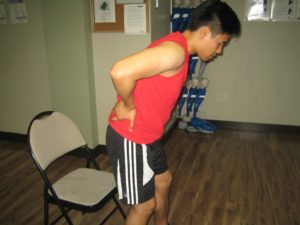A spinal cord injury is any damage to the spinal cord caused by numerous reasons, either because of direct heavy trauma to the spinal cord, loss of blood supply, compression, tumor or an infection. The spinal cord acts as a highway for nerves that travels up to the bottom of your back and connect to different body parts. If they incur damage in any way, it may result to inability of the muscles to function.
What are the causes?
The most common cause of a spinal cord injury is trauma, while the other cause is due to vehicular accidents.
Other forms of trauma include:
- Falls from significant heights
- Physical assault
- Injuries from contact sports
A spinal cord injury can also be brought about by a crushing force from a tumor, infection or even inflammation.
Signs and symptoms

The symptoms depend on where the injury took place and whether the injury is complete or incomplete. In people who sustained an incomplete spinal cord injury, some muscle function will remain while a complete spinal cord injury, there will be no muscle function below the level of the injury.
Injury to the spinal cord can result to weakness or a full loss of muscular function and sensation in parts of the body, loss of bowel and bladder control and loss of sexual function. For people who sustain spinal cord injuries located in the upper neck, they will suffer from breathing issues and may require the use of a breathing machine.
Management of a spinal cord injury?
The initial step in treating a possible spinal cord injury is to check and verify if the individual is breathing and has a heartbeat. An injury to the upper neck area of the spinal cord can cause a loss of control of normal breathing which may require the use of a breathing machine or a ventilator.
The following step is to immobilize the patient. The doctor performs this at the time of the injury before transport to the healthcare facility. Paramedics may place a cervical collar or a backboard to help prevent the spine from moving. If the patient does have a spinal cord injury, any further movement of the spine could lead to further damage.
After identifying the injury, the doctor may apply a high dose of steroids onto the patient. In addition, the steroids are used to possibly help decrease the amount of impairment to the spinal cord by alleviating the inflammation and swelling.
More Information
The details posted on this page on spinal cord injury is for learning purposes only. To learn more about the causes and how it is managed, enroll in a first aid course with one of our training providers.
FACT CHECK
https://en.wikipedia.org/wiki/Spinal_cord_injury
https://www.mayoclinic.org/diseases-conditions/spinal-cord-injury/symptoms-causes/syc-20377890
